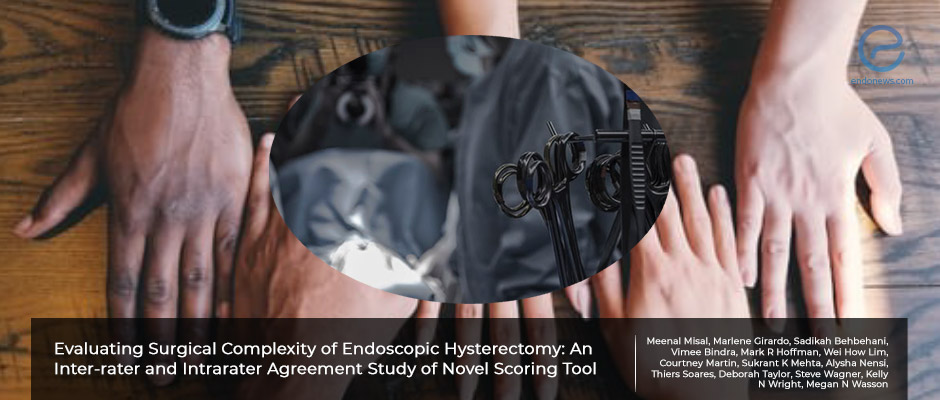A novel scoring tool to standardize surgical complexity for gynecologists.
Apr 14, 2022
Assessment of the "inter-rater" and "intrarater" reliability of surgical complexity for endoscopic hysterectomy.
Key Points
Importance:
- The intraoperative note is key to picturise the surgical complexity but the document is subjective and the quality of dictation as well as describing the findings depends on the surgeon.
Highlights:
- The scoring tool was the first anatomy-based "technical complexity tool" based on digital image review developed for the use of gynecologists.
What's done here:
- Dr. Misal from the Mayo Clinic, Arizona pioneered the implementation of a novel scoring tool partially modeled in the style of rASRM criteria.
- The purpose is to evaluate inter-rater and the intrarater reliability of a novel scoring tool for surgical complexity assessment of endoscopic hysterectomy.
- A target of 150 sets of surgical images was collected from academic tertiary clinics about any gynecologic endoscopic cases deemed appropriate for scoring stage1-2 and stages 3-4.
- Thirteen obstetrician-gynecologist participants with post-residency training, clinical practice, and surgical experiences were asked to complete the rating of all 150 sets of assessments.
- Eventually, an anatomy-based technical surgical complexity tool based on a digital image review was developed for use by gynecological surgeons.
Key Results:
- Only 11 of the recruited surgeons were able to complete the scoring for all 150 sets of assessments within the allotted time.
- The raters were 8 gynecologic surgeons who had completed minimally invasive gynecologic surgery fellowship and 3 academic OB/GYN generalists with 2-15 years of post-residency practice.
- Six of the surgeons with fellowship experiments reported that they performed more than 50 hysterectomies per year, while the remaining 21 and 30 per year.
- The group of three OB/GYN specialists reported lower surgical volumes as 0-to 30 hysterectomies per year.
- More than 95% of the surgical images were collected from robotic surgeries and the reminder from laparoscopic cases.
- Raters deemed 95,4% of images as satisfactory for assessment and inter-rating reliability did not differ by training.
- Inter-rating agreement for staging based on a single-question assessment compared with the scoring tool was high among all raters with an average of 80,2% agreement.
Lay Summary
The field of gynecologic surgery needs a more comprehensive, objective, and reproducible method for assessing and communicating surgical complexity than the current approach. Actually, there is no formal image-based system that allows surgeons to categorize and communicate the complexity of endoscopic hysterectomies.
The aim of this study is to develop a system specifically for endoscopic hysterectomy through the creation of a novel scoring tool based on a review of surgical images.
Misal et al from the Department of Gynecology, Mayo Clinic, Arizona, Phoenix, USA developed and refined a new scoring tool for facilitating the complexity of staging endoscopic surgeries for gynecologists. This study was recently published in the Journal of Minimally Invasive Gynecology.
"This tool which tested the inter-rater reliability for the stage of complexity using the image scoring of endoscopic hysterectomies could be easily integrated into clinical practice, research methods, and other utilities" concluded the authors.
Research Source: https://pubmed.ncbi.nlm.nih.gov/35085838/
Minimaly invasive surgery Validation complexity score anatomy assessment endoscopic hysterectomy pelvic adhesions ureterolysis endometriosis.

